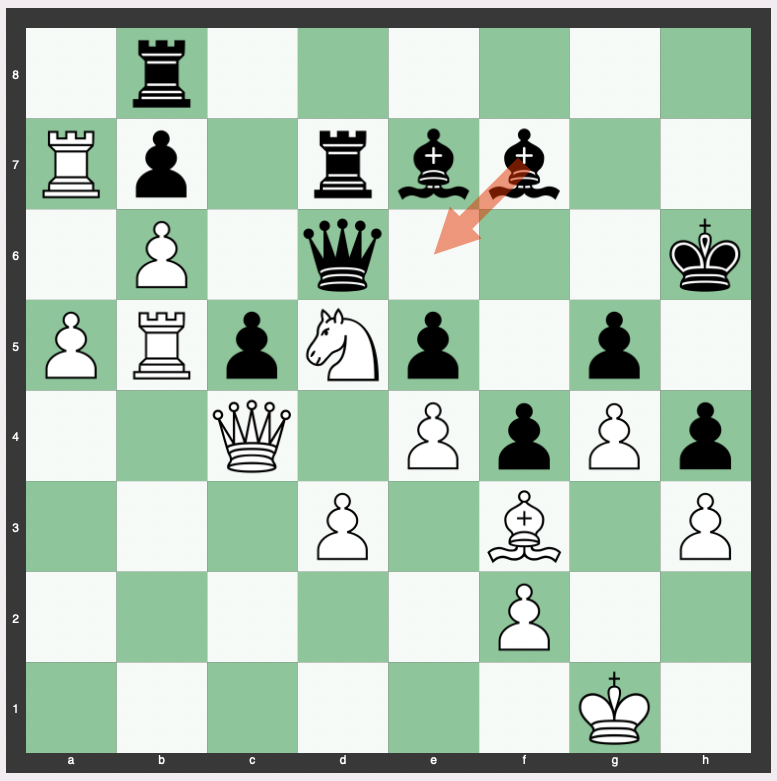Prophylaxis is a key strategic concept in the game of chess.
It involves the prevention of your opponent’s threats before they can materialize, often by making subtle moves that may not be immediately obvious.
In this article, we will explore the concept of prophylaxis, its importance, and how it can be effectively applied to improve your chess game.
The Importance of Prophylaxis in Chess
Prophylaxis is an important aspect of chess strategy, as it helps players anticipate and counter their opponent’s plans.
By proactively addressing potential threats, players can maintain a strong position and gain a competitive advantage.
This defensive approach can be especially effective in higher-level play, where players are more likely to capitalize on weaknesses in their opponent’s position.
Zugzwang is a form of prophylaxis.
Prophylaxis Example
Below is an example of prophylaxis in chess.

All of Black’s pawns are immobile.
The rooks are protecting the b-file pawn and preventing infiltration.
Overall, Black has no moves that really help advance its position.
Even though Black is down just one pawn, the computer evaluation (Stockfish) of the position is +4.50 for White.
Developing Prophylactic Thinking – Identifying Potential Threats
The first step in applying prophylactic thinking to your game is to recognize potential threats from your opponent.
This requires a thorough understanding of your opponent’s position, pieces, and possible plans.
Analyzing your opponent’s moves and assessing their goals can help you predict their next actions and determine how best to respond.
Prophylactic Moves and Techniques
Once potential threats have been identified, players can employ various prophylactic moves and techniques to mitigate them.
Some common prophylactic methods include:
Restricting piece mobility
By placing your pieces in such a way that they limit your opponent’s movement, you can prevent them from executing their plans effectively.
Strengthening your position
Fortifying key squares or pieces can help you maintain a solid position and make it more difficult for your opponent to create threats.
Removing targets
By moving vulnerable pieces out of harm’s way or exchanging them for less valuable pieces, you can reduce the risk of losing material and maintain the balance in the game.
Examples of Prophylactic Moves in Chess
Many famous chess games feature prophylactic moves that have helped players secure victory.
Here are a few examples:
The Hedgehog System
In this opening, Black adopts a passive but solid pawn structure that is difficult for White to break through.
By doing so, Black aims to prevent White from executing aggressive plans and waits for an opportune moment to counterattack.
The Nimzo-Indian Defense
This opening involves Black putting pressure on White’s center by targeting the c4 and d4 squares.
Black’s goal is to prevent White from expanding their pawn center and to disrupt their plans.
Karpov’s Prophylactic Approach
Former World Champion Anatoly Karpov was known for his prophylactic style of play.
In many games, he would make subtle moves to restrict his opponent’s activity and slowly improve his position, eventually gaining an advantage.
Developing Prophylactic Thinking
To improve your prophylactic thinking, consider the following tips:
- Practice analyzing your opponent’s position and predicting their plans during games.
- Develop your understanding of common opening strategies and the threats they present.
- Study master games that feature strong prophylactic play to learn from their techniques.
- Incorporate prophylactic moves into your own games and observe how they affect the outcome.
Conclusion
Prophylaxis is an essential aspect of chess strategy that can help players gain a competitive edge by anticipating and countering their opponent’s threats.
By developing your prophylactic thinking and incorporating it into your gameplay, you can improve your overall chess performance and increase your chances of success.


